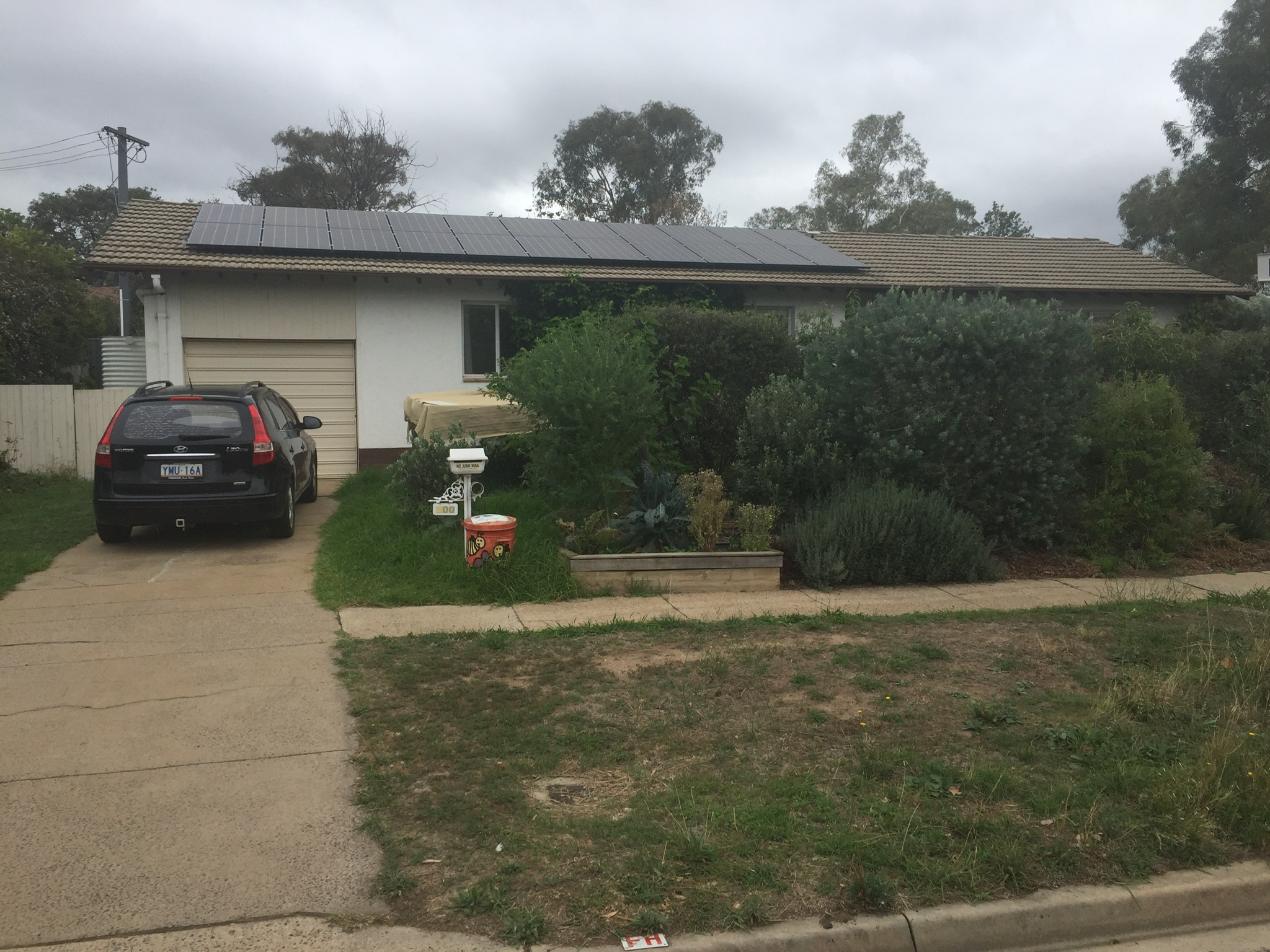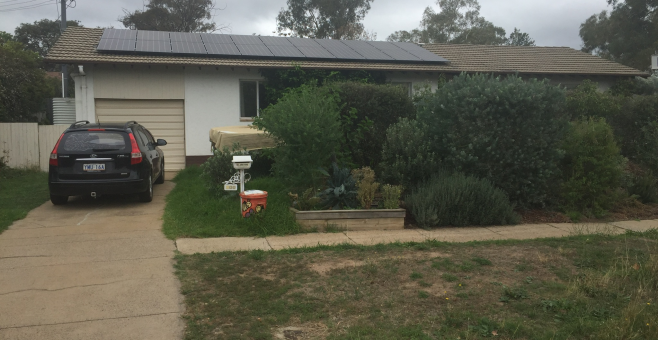This is our second installment of the Stormwater in your garden series. Hannah, our Urban Water Education Officer has been interviewing recipients of H2oK grants in Canberra, to see how they have used the funding to utilise stormwater in their gardens.
——————————————————————————————————————–
Thanks Ren for taking the time to share your garden and stormwater management with SACTCG members. Could you tell us a little bit about your house and garden?
 We have a 3 bedroom 1970s brick veneer home on a 575m2 block in Waramanga. The block is on a gentle north facing slope. A large eucalypt on the western side is the only significant shade to the block.
We have a 3 bedroom 1970s brick veneer home on a 575m2 block in Waramanga. The block is on a gentle north facing slope. A large eucalypt on the western side is the only significant shade to the block.
We have planted over 40 fruit trees as well as table grapes, kiwis, passionfruit, and berries, and have converted large areas of lawn to vegetable gardens. We also keep laying hens, and periodically take in young roosters that we raise for the table. The garden is being developed on permaculture principles, and is focused on food production. We try to maximise the use of on-site resources, such as water re-use, prunings, food scraps, chicken poo etc and minimise external inputs. Where we do use external inputs, we try to use second-hand items and waste products.
We have a worm farm, two wicking beds, a composting toilet, and a dust bin by the letterbox for neighbours to drop off their food scraps. One wicking bed is against the footpath for passers-by to help them-selves to herbs and greens.
How long have you been working on your garden?
We bought our house in mid 2016 and have been working on the energy efficiency of the house and the garden since then.
Why did you apply for a H2Ok grant?
We applied for an H2OK grant to help us fund further developing our water management systems, and to then have a platform to showcase what we have done to others.
What did you use the H2OK grant for?
The bulk of the grant was spent on purchasing a 5000 litre slim-line water tank. We also bought 20 bails of spoilt lucerne hay to mulch the garden, drip irrigation line and fittings, and a chicken tractor. The grant and subsequent garden tours motivated us to put more time and effort into developing the garden.
What’s your favourite part of your garden?
I built a deck and installed a door on the western side the house, and have grown a crimson seedless grape over the pergola to provide seasonal shade. This vine produces hundreds of bunches of grapes each summer, and deck provides a great view over the garden. We put a nesting box in the large gum tree, and also a bird bath underneath it, so have lots of bird activity to observe while relaxing on the deck. The autumn colour of the persimmon tree is particularly spectacular at this time of year.
Any thing else you would like to share?
 One interesting project has been replacing a pittosporum hedge with a fruiting hedge, or ‘fedge’. As we didn’t want to lose the privacy of the original hedge, we cut down the first row but left the second row. We have planted out where the first row was with evergreen fruiting species (such as fejoa, loquat and olives) as well nitrogen fixing support species (such as wattle, and tagaste or tree lucerne). They have almost reached a height where we will cut out the second row of pittosporum and put in another row of fruit trees and extend the veggie garden.
One interesting project has been replacing a pittosporum hedge with a fruiting hedge, or ‘fedge’. As we didn’t want to lose the privacy of the original hedge, we cut down the first row but left the second row. We have planted out where the first row was with evergreen fruiting species (such as fejoa, loquat and olives) as well nitrogen fixing support species (such as wattle, and tagaste or tree lucerne). They have almost reached a height where we will cut out the second row of pittosporum and put in another row of fruit trees and extend the veggie garden.
Another interest we have is trying to grow sub-tropical fruiting plants that don’t traditionally survive in Canberra. We have an avocado, passionfruit, Tahitian lime, and a tamarillo that are all growing well in the warmer microclimate against the brick walls of the house. This season the tamarillo fruited prolifically, but is always severely impacted by frost.
Thanks to Ren Webb for sharing his garden with us!


